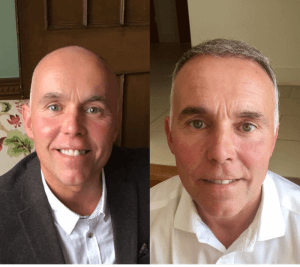Micro Hair Pigmentation
Micro Hair Pigmentation is the process of replicating the appearance of shaven hair. Done by introducing thousands of tiny pigment deposits into the epidermis of the scalp. When placed by a skilled technician, the recipient appears as if they have a full head of hair. It looks like shaved to a very short length.
This article is intended for those who have recently discovered micro hair pigmentation, and want to find out more about the process and its applications. Without a doubt, scalp micro pigmentation is the fastest growing solution for male hair loss in recent history. It is non-invasive, has universal appeal and is permanent, but only if you want it to be. Furthermore, it remains the only permanent hair loss fix to offer instantaneous, guaranteed results.

A large number of people who stumble upon this treatment have no idea where it came from. The patient doesn’t know how it was developed and how far it has come since it’s introduction. I believe that understanding the history of this solution for hair loss is important. This is because without that background information. It is difficult to do effective research and put it all into context.
Various terms are used to describe the treatment process. These terms include scalp pigmentation, micro scalp pigmentation, micro hair pigmentation, SMP, MSP, hair follicle replication, Trico pigmentation and hair tattooing. Please note that all these terms refer to the same basic scalp technique.
What is the treatment process?
A fairly modest treatment to undertake, the scalp micro pigmentation method consists of depositing small ‘dots’ of pigment into the dermal layer of the skin, by using a fine needle. The artist creates a deception of a full head of hair.
The client usually requires 2-3 sessions, each lasting approximately 2-6 hours, but time does vary depending on individual requirements. The technician repeats the process until both he and the client are satisfied. The goal is the point that hair cannot be distinguished from the surrounding real hair.
General hair loss
Most clients need a full head treatment. This means the entire top of the head. And a blending area into the ‘horseshoe’. Most clients from a Norwood 3 onwards will require this. Even if they have a substantial amount of natural hair remaining. This happens because your upper crown area of the head needs to have its “hair density” increased. After the treatment, it looks perfect when comparing it with the sides and the back of your head.
Camouflaging scars from hair transplants
Tissue that appears when a scar gets in place on the scalp is a bit trickier to work with. It usually requires more sessions. A common scenario is for the client to have a full head treatment as detailed above. With the addition of scar camouflage work. Whilst the rest of the treatment may be complete after 2-4 sessions. The scar may need an additional session or two to achieve the optimum level of camouflage.



 WhatsApp us
WhatsApp us